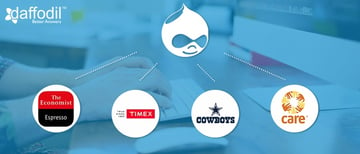
App Entrepreneurs are making money, every day. Their innovative apps are making way to billions of smartphones, worldwide.
Mobile apps like Shazam, Clash of Clans, Pokemon Go and their popularity is an inspiration for many to become an independent entrepreneur.
However, many of these aspiring app entrepreneurs are clueless about getting started with mobile app development, which is evident from the queries that we receive (very often).
- “I have an idea to build an app. But I don’t know where to start.”
- “I want to raise funds for my app but investors can’t comprehend my idea well.”
- “I want to build an app like Uber/Whatsapp/Instagram. How much will it cost?”
Making an app stand-out in the app stores is arduous. With millions of app already existing, it’s impossible to get those whopping number of downloads, leave aside the positive retention rate. And therefore, a systematic approach to validate, design, develop, and test a mobile app is important, before it is deployed to the app stores.
This guide, shared below offers step-by-step guidance to get started with a mobile app development project, when all that you have is an app idea.
1. Validate the Idea: Concept Analysis and Discovery
An idea is usually a solution (a source of entertainment, inspiration, education, connecting people etc.). Therefore, before you proceed towards development, confirm if your idea is:
- Resolving the problem of the masses,
- If the targeted problem is authentic and typical,
- What's the scalability scope of the app in future,
- How will it complement the revenue model etc?
So, don’t jump to conclusions, unless you verify your app idea for the aforementioned factors. For ratifying the idea, you can perform a survey amongst targeted audiences, meet them over coffee, join online forums (Quora, Reddit etc.) to identify USPs, loopholes, and opportunities of your project, in a roundabout way.
Along with this, identify the audience for your app (entrepreneurs, kids, students, gamers etc.). You can further categorize them by virtue of their age (Gen X, Y, Z). Remember, that a successful app is all about targeting the right persona with your solution.
2. Conceptualization: A Move Towards Practicality
2.1. Cataloguing Requirements
Possibly, your app is one-of-its-kind or an app with related functionality already exists. In the latter case, you need to define the differentiating features of your app, how those functionalities can add value to your app, what are the user roles, how will the user navigate within the app, where would they need a walkthrough etc.
In this phase of conceptualization, you can define features of your Minimum Viable Product. An MVP is the initial version of your app, with a minimum (but most essential) features and functionality.
RELATED READ: Guide to Mobile App Development using MVP
2.2. Prototyping the Idea
The next step is to elaborate on the idea, practically. For this, you can download prototyping tools that facilitate creating mock-ups for your app. Creating a prototype for mobile app development will offer several benefits like:
Design a rough, practicable UI/UX of the app where you can add micro-behaviours like gestures, animations, transitions, scrolling etc. Once that is done, you have a dummy for the app to take feedback and present to the investors. When you send them your pitch deck, make sure it's compelling and to the point.
RELATED READ: Benefits of Using Mobile App Prototyping Tools
2.3. Creating a Technical Architecture
Once you are acquainted with what has to be achieved, it’s the time to select the technology stack for building the app. Depending upon the budget, features-set, targeted audience etc., the technology stack for mobile app development can be selected. In this process, you can consider the following aspects:
- Building an app for Android or iOS platform, or both
- Native, hybrid, or cross-platform native app development
- Custom application development or Off-the-shelf development
- Outsourcing project, setting up an in-house team or hiring a freelancer
- Third-party tools or integrations involved
Depending upon all these factors, a technology stack can be finalized that can help to bring out the best from your idea.
RELATED READ: How to Estimate the Cost of Mobile App Development
3. Deployment: Selecting Development Partner
Ideas pull the trigger, but execution loads the gun. And therefore, choosing the right development partner is one of the crucial steps in giving life to your idea. For this, you have had a list of questions that you need to ask them, which may include:
- The methodology used for mobile app development (Agile and DevOps are preferred)
- The core area of expertise and their experience that can be evaluated through a portfolio
- The non-disclosure agreement so that you can confidentially share your app idea with them
- Ways to communicate with team, timelines, ownership code and related questions.
RELATED READ: 12 Things to Ask your Mobile App Development Partner
Micro Steps from Ideation to Deployment:
Reading the guide above, you must be wondering that there is too much to do before an app idea reaches the development phase. To simplify this, we have Discover and Frame Workshop, helping you in the initial phase of idea ratification.
The workshop ensures the most efficient way to create a roadmap for your product idea, wherein the scope, user flow, timeline and cost of developing an app can be visualized.
RECOMMENDED READS:
- How to Blend UI/UX with Human Psychology During Mobile App Development
- Human Psychology behind Viral Apps: The Hook Model
- Moving Beyond Number of Downloads to Mobile App KPIs for Success




